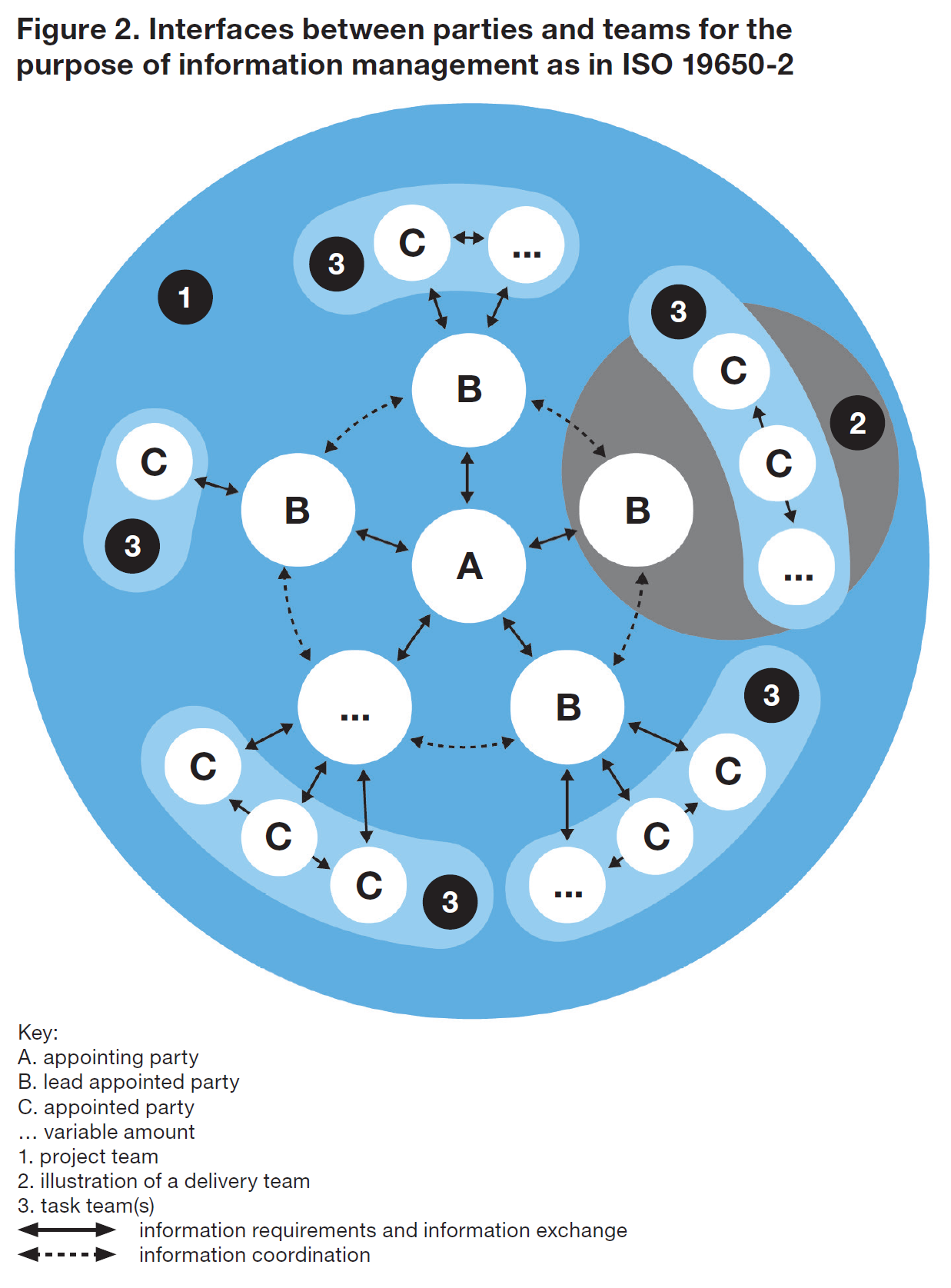
Project managers currently play a limited role in the implementation and use of BIM as part of the project delivery process. If BIM is to achieve its full potential, they need to be more proactive at both a project and organisational level and understand the wider implications and the possibilities BIM can unlock for the built environment.
The project manager can have an impact on how the processes are modified and the necessary inputs required to facilitate BIM. They should participate in early decision making and be clear on the advantages and challenges of BIM implementation.
BIM implementation does not necessarily mean that organisations need to develop completely new processes; they can modify the processes they already have in place. When identifying where BIM fits into organisational workflows, the main focus should be on people, technology and standardisation requirements.
The motive behind BIM is to allow all stakeholders involved on a project to obtain the right information, from the right person, in the right form, at the right time. Project managers can use their extensive experience in communication, coordination and collaboration to develop BIM implementation and achieve this outcome.
BIM should improve the way projects are delivered and how assets are managed. The integrator role of the project manager means that they can – and should – play a major part in the leadership and governance of the information management.

"The integrator role of the project manager means that they can – and should – play a major part in the leadership and governance of information management"
Aligning information requirements with three key categories defined by ISO 19650 – the international standard for managing information over the whole life cycle of a built asset using BIM is one way to ensure an improved project.
-
Organisational.
Information needed to meet high-level strategic objectives, such as effectiveness, efficiency and sustainability.
-
Asset.
Information required to support the day-to-day asset management process, such as equipment registers, records of installation and maintenance dates.
-
Project.
Information expressed in terms of the project stages. These requirements include data, such as project geometry, scheduling, costing and performance requirements during project design.

Broadly speaking there are three main drivers when BIM is applied on a project.
-
Information production.
This is mainly important for the design, engineering and construction disciplines.
-
Information management.
This consists of managing the information according to ISO 19650-2, based on individual or combined models, usually carried out by the BIM project manager.
-
Information extraction and usage.
Everyone involved in the project may be required to add and extract information to and from the BIM models.
By clearly defining the BIM management function as an independent entity, the project information management process can be divided into three component parts: sponsorship, management and delivery.
Sponsorship
1. Assessment and need. All asset and project information that is to be supplied during the asset life cycle should be specified in the form of exchange information requirements (EIR). The role of the project manager in the development of the EIR is crucial, since it will both impact and be impacted by overall project requirements such as time and cost.
2. Invitation to tender. The relevant information should be issued to each prospective lead appointed party as part of the procurement process, and it should be compiled by the project manager. This should include: the EIR; relevant reference material; tender response requirements and evaluation criteria; and the BIM protocol. The project manager should ensure the assessment of the BIM capabilities and maturity of the project delivery network.
Management
3. Tender response. This should be reviewed by the project manager and should include: the pre-BIM execution plan (BEP); capability and capacity assessment summary; resource mobilisation plan; and risk assessment. The project manager plays a crucial role in the development of the BEP since it will allow the project objectives to be accomplished.
4. Appointment. The appointing party should ensure the following is included in the completed form of appointment documents for the lead appointed party: the appointing partys EIR; the project's information standard and protocol, including any agreed additions or amendments; the delivery team's BIM execution plan, or post-appointment BEP; and the delivery team's master information delivery plan (MIDP) listing all the information deliverables of a project including models, specifications, equipment and schedules. The MIDP should identify when project information is to be prepared, by whom, and the specific protocols and procedures. With the help of the MIDP, the project manager can define the project schedule and its link to BIM deliverables.
Delivery
5. Project delivery. This should be centred around resource mobilisation, collaborative information production, information model delivery and the end of delivery phase.
This whole process should be applied throughout the delivery phase of assets for each appointment, regardless of the project stage. The BEP should be treated as a live document and updated continuously. The usual procedure to contractually incorporate BIM implementation on a project is by the addition of an addendum or protocol specifically relating to BIM, which makes it binding to all the interested parties.
The use of BIM evolves during the project life cycle. In the design phase, it plays a key role in the design analysis by way of 'what-if' simulations, coordination and model authoring. In the construction phase BIM influences decisions on functions including construction techniques, supply chain management, building layout, temporary works planning and safety and quality management.
Pitfalls to avoid
The importance of project coordination is often only realised when something goes wrong. The general perception has been that design mistakes can be corrected on site. However, project managers can now use BIM to mitigate design errors and thus significantly reduce any potential changes to the project due to constructability issues. Appropriate contractual requirements – such as construction management at risk or integrated project delivery forms of contract – and financial incentives – for example penalties for incompatibilities detected on site due to design errors should be put in place.
- Information requirements as defined in BIM documents not being met, leading to fragmentation in the design and construction processes. Another risk is BIM requirements not being properly defined as aligned to the project objectives.
- BIM coordination changes not being incorporated into the project documents.
- BIM coordination being in progress but the building still being built from the drawings using traditional tools.
- On-site sub-contractors not taking ownership of the BIM models.
- BIM coordination occurring in a disjointed fashion to the design or construction schedules. For example, too early when the design is still evolving and hasn’t been signed off, or too late to support the production of information such as drawings.
- A diversity of BIM knowledge, skills and competences along the supply chain, which may raise resistance to change.
- Insufficient organisational support for BIM application on projects, stemming from the absence of an effective strategy for BIM implementation at company level.
- Difficulty in defining KPIs to monitor and control project success.
Managing change
Every business involved in the delivery of built environment projects must consider BIM implementation at an organisational level, and not just in terms of a project or discipline. Company-level BIM objectives can thus be translated into project-based BIM objectives.
Project managers can take the lead in this process, and assist in developing a plan to sync the organisational strategy, project strategy and BIM strategy.
The recommended process for BIM implementation at the organisational level is as follows.
-
Internal support.
Buy in at c-suite level and top management sponsorship.
-
Internal stimulation.
Pilot projects involving both project teams and mid-tier team members.
-
External stimulation.
Developing partnerships in the supply chain and expanding and promoting the use of BIM.
-
Continuous improvement.
Developing more, and increasingly complex, projects.
Its important to note that, despite its potential, BIM is not yet the panacea the industry has been looking for. The general lack of BIM standardisation; the scarcity of individuals who have a combined knowledge and experience in BIM and the construction industry; the difficulty in defining SMART – specific measurable actionable relevant and timely – objectives; and the complexity of performing a cost-benefit analysis focused on potential errors, omissions, incompatibilities and other inefficiencies, are all major challenges.
Project managers are, however, arguably in the best position to ensure we overcome these challenges and realise the benefits of implementing BIM fully across our industry and projects.
Bruno de Carvalho Matos MRICS is a civil engineer and board member of RICS Portugal
Related competencies include: BIM management, Programming and planning
